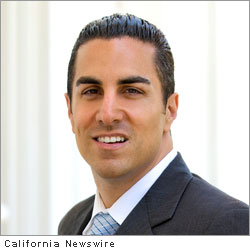 SACRAMENTO, Calif. /California Newswire/ — After two years of work, California Assemblyman Mike Gatto (D-Los Angeles) has found a new partner in the fight for green transportation and domestically produced alternative energy. Building on an idea of Gatto’s, the California Energy Commission (CEC) has announced that it will fund preliminary research on the potential of using California’s roadways to generate green electricity.
SACRAMENTO, Calif. /California Newswire/ — After two years of work, California Assemblyman Mike Gatto (D-Los Angeles) has found a new partner in the fight for green transportation and domestically produced alternative energy. Building on an idea of Gatto’s, the California Energy Commission (CEC) has announced that it will fund preliminary research on the potential of using California’s roadways to generate green electricity.
The research will focus on the large-scale energy-harvesting capabilities of piezoelectric materials, which are currently used in everything from lighters to smart phones. The research stems from a bill authored by Gatto, AB 306, which passed the legislature in 2011 with bipartisan support but was vetoed by Governor Brown because of a lack of funding for the project. In the veto message, the Governor encouraged Gatto to work through the CEC’s grant process to obtain funding for the project, and a year later, the assemblyman has successfully secured the funding.
“I am excited to see movement on this important research,” said Gatto. “California is the car capitol of the world. Just think how much energy we could create if we can harness some of the wasted energy produced by cars and trucks as they rumble down the roads.”
The science of piezoelectric roads works as follows: When a car or truck passes over pavement, the pavement vibrates. By placing relatively inexpensive piezoelectric sensors underneath a road, the vibrations can be converted into electricity to power roadside lights, call boxes, and neighboring communities. It may sound like something out of science fiction, but this technology has been used for years in sonar, and is used every day in touch-screen phones to convert pressure into electrical impulses. There is no extra energy needed for the car to transverse piezoelectric highways, because the sensors are located in the pavement itself.
Several countries have experimented with a road-based version of piezoelectric technology, including Israel, which has already placed this technology under some of their highways. In 2009, the East Japan Railway Company installed piezoelectric flooring in their Tokyo railway station. The energy generated by passing pedestrians is sufficient to power all the displays in the station. More recently, Italy has signed a contract to place the technology under a stretch of the Venice-to-Trieste Autostrada and a dance club in San Francisco has piloted the technology under their dance floor to run their lighting. Then-Mayor Gavin Newsom worked on piloting the technology in pedestrian walkways in downtown San Francisco.
“Now, California can join the ranks of nations who are actively seeking uses for this exciting new technology,” said Gatto. “Thirty years ago, very few people would have believed that black silicon panels left in the desert could generate ‘solar’ power. And just ten years ago, people were skeptical when you described a Bluetooth device. This technology is very real. I’m glad the state is taking steps to keep California on the cutting edge of energy policy and I’m very pleased the CEC has embraced the possibility.”
The Energy Commission should complete initial research on the technology by the end of January, 2013 and will determine, based on their findings, if a small-scale-test project will be conducted by the State.
Mike Gatto is the Chairman of the Appropriations Committee of the California State Assembly. He represents the cities of Burbank, Glendale, La Canada-Flintridge, La Crescenta, Montrose, the Los Angeles neighborhoods of Los Feliz, Silver Lake, Atwater Village, and portions of the Hollywood Hills and East Hollywood.



